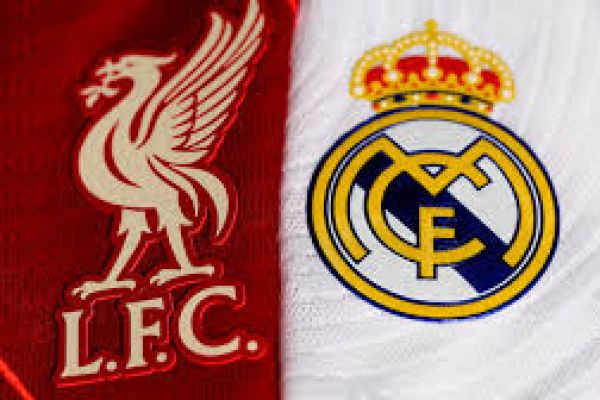The rivalry between Liverpool FC and Real Madrid CF is defined by history, drama, and a stark, repeated pattern of frustration for the English side. This fixture, often contested on the grandest stage of the UEFA Champions League, is not merely a clash of two footballing giants, but a battle of philosophies: Jürgen Klopp’s heavy metal pressing against Real Madrid’s surgical, almost effortless, winning mentality. Analyzing this rivalry requires looking beyond current form and appreciating the deep tactical and psychological scars left by previous encounters.
The Historical and Psychological Context
The modern rivalry is framed by Real Madrid’s repeated dominance in key moments. Having met in three European Cup/Champions League finals ($1981$, $2018$, $2022$), with Madrid winning the last two, the fixture carries significant psychological baggage for Liverpool. The $2022$ final, decided by a Vinícius Júnior goal and a phenomenal Thibaut Courtois performance, perfectly encapsulated the core issue: Liverpool’s overwhelming volume of attack neutralized by Madrid’s combination of world-class individual saves and clinical efficiency. For Liverpool, winning this tie is not just about advancing; it is about exorcising European ghosts.
Liverpool's Tactical Blueprint: Chaos and Control
Liverpool's success is built upon Gegenpressing—the aggressive counter-press immediately upon losing possession—executed within a flexible $4-3-3$ formation. Their strategy revolves around two core pillars:
Vertical Speed: The team aims to move the ball from defense to attack as quickly as possible, utilizing the pace of their wingers, most notably Mohamed Salah. The speed and synchronization of the front three are designed to overwhelm rigid defenses.
Full-Back Creativity: The full-backs, particularly Trent Alexander-Arnold and Andrew Robertson, function as the primary playmakers, providing width, supplying crosses, and joining the midfield, effectively turning the formation into a $2-5-3$ in attack.
Against Real Madrid, Liverpool's objective is to impose such a frantic tempo that Madrid's typically composed midfield loses control. They must disrupt the passing rhythm of Toni Kroos and Luka Modrić to prevent Madrid from establishing their preferred, slower tempo.
Real Madrid's Tactical Blueprint: Elegance and Efficiency
Real Madrid operates not on relentless pressing, but on positional control, world-class midfield experience, and unparalleled transitional ruthlessness. Carlo Ancelotti typically employs a $4-3-3$ or $4-4-2$ hybrid that is defensively disciplined yet offensively flexible.
Key Strengths:
Midfield Mastery: The pairing of Kroos and Modrić (often alongside a dynamic player like Fede Valverde or Aurélien Tchouaméni) dictates the match's tempo. They are expert at managing pressure, utilizing short, sharp passes to evade the Liverpool press, and knowing precisely when to initiate a devastating vertical counter-attack.
Transitional Weapon: Vinícius Júnior is the primary threat in transition. His speed and dribbling ability allow Madrid to instantly turn defense into a clear goal-scoring opportunity, particularly targeting the space left by Liverpool’s high-flying full-backs.
The Goalkeeper Factor: Thibaut Courtois has been Madrid’s undeniable "clutch" performer in this fixture, consistently pulling off game-saving stops that frustrate Liverpool's high shot volume.
Madrid’s game plan will be simple: absorb the initial Liverpool intensity, maintain tactical shape, and punish the inevitable space left behind the full-backs.
Key Tactical Decisive Battles
The outcome of this colossal fixture will likely be decided by three critical duels:
The Midfield Tempo War: If Liverpool can corner Kroos and Modrić with their press, forcing turnovers in dangerous areas, they will win. If Kroos and Modrić can calmly pass through the press, they will control the game and dictate where the attacks originate.
Alexander-Arnold vs. Vinícius Júnior: This is the most crucial individual battle. Liverpool's primary creative outlet (TAA) is directly responsible for defending Real Madrid's primary transitional threat (Vinícius). Any attacking mistake by Alexander-Arnold is instantly exposed by the Brazilian, who has historically feasted on this space.
Clinicality vs. Volume: Liverpool needs to be ruthlessly clinical with their chances. They typically outshoot Madrid significantly, but Madrid boasts an elite conversion rate. If Courtois has an exceptional night, Liverpool's high volume of shots will mean nothing if they are not converted early to break Madrid's defensive resolve.
In conclusion, this tie is a battle against history and quality. Liverpool must find a way to make their incredible intensity count, while Real Madrid will rely on their unmatched composure, their midfield generals, and their transitional speed to once again find a way to win when it matters most.








